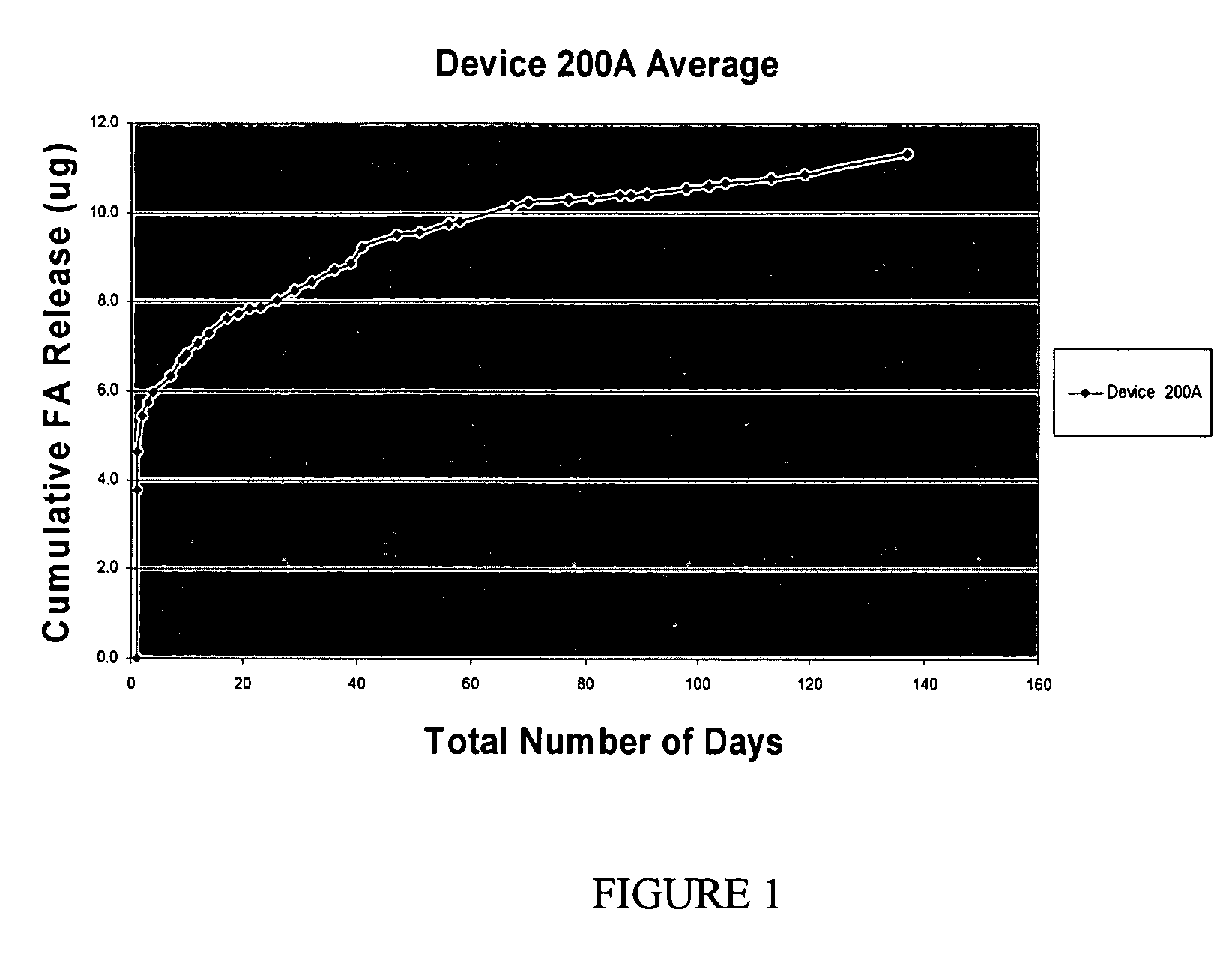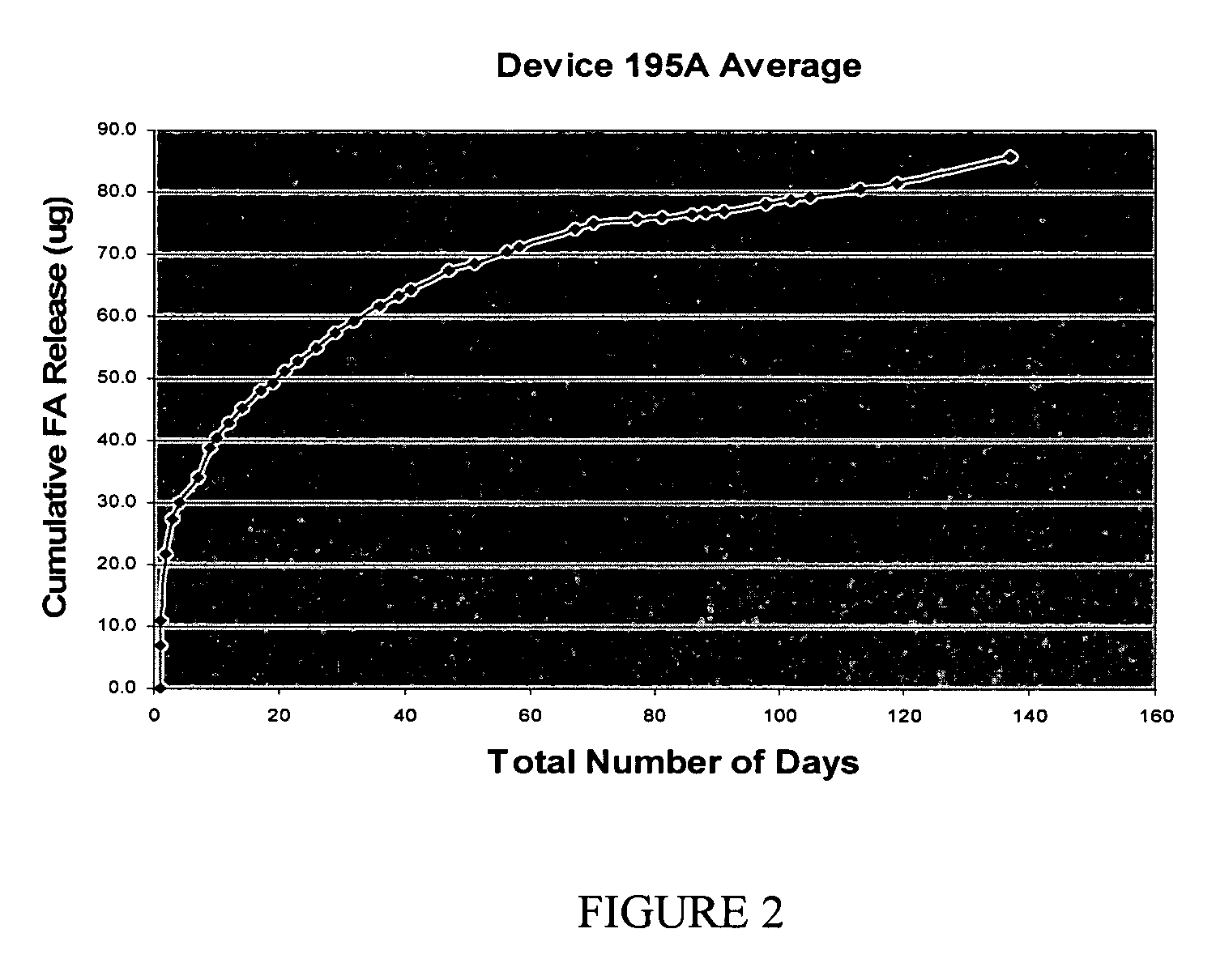Drug delivery systems
a drug delivery and liquid technology, applied in the direction of powder delivery, pharmaceutical delivery mechanism, prosthesis, etc., can solve the problems of low drug level, high initial drug level, and unsuitable or practical conventional drug delivery involving frequent periodic dosing
- Summary
- Abstract
- Description
- Claims
- Application Information
AI Technical Summary
Benefits of technology
Problems solved by technology
Method used
Image
Examples
example 1
Synthesis of 1,3-bis(4-methacryloyloxybutyl)tetramethyl disiloxane (M2)
[0079]To a four neck resin flask equipped with a mechanical stirrer, Dean-Stark trap, heating mantle, water cooled condenser and thermometer was added 1,1-dimethyl-1-sila-2-oxacyclohexane, methacrylic acid, and concentrated sulfuric acid. To the reaction mixture was then added cyclohexane and hydroquinone as a polymerization inhibitor. The reaction mixture was heated to reflux for five hours during which time of water was collected. The reaction mixture was then cooled, divided, and passed through two chromatography columns filled with alumina (packed using cyclohexane as eluant). The cyclohexane was removed using a rotary evaporator and the resultant M2 is placed under vacuum for one hour at 80° C.
example 2
Synthesis of a methacrylate-terminated siloxane (M2D2)
[0080]To a round bottom flask under dry nitrogen was added D4 (octamethylcyclotetrasiloxane) and the M2 prepared in Example 1. Trifluoromethane sulfonic acid was added as initiator. The reaction mixture was stirred 24 hours with vigorous stirring at room temperature. Sodium bicarbonate is then added and the reaction mixture was again stirred for 24 hours. The resultant solution was filtered through a 0.3μ Teflon® filter. The filtered solution was vacuum stripped and placed under vacuum (>0.1 mm Hg) at 50° C. to remove the unreacted silicone cyclics. The resulting methacrylate terminated siloxane was a viscous, clear fluid.
example 3
[0081]To 100 parts of the methacrylate terminated siloxane prepared in Example 2 (where x=2) was added 1.0% Irgacure 819 as a photoinitiator and 20% w / w of fluocinolone acetonide (FA). The suspension was added to Teflon tubes (0.5 mm in diameter) available from Boramed (Durham, N.C.) and polymerized using visible light polymerization techniques. The cure conditions consisted of two hours of visible light irradiation. Following the cure the drug loaded copolymer was removed from tube resulting in a release device having dimensions of 5 mm by 0.5 mm.
PUM
| Property | Measurement | Unit |
|---|---|---|
| temperature | aaaaa | aaaaa |
| time period | aaaaa | aaaaa |
| length | aaaaa | aaaaa |
Abstract
Description
Claims
Application Information
 Login to View More
Login to View More - R&D
- Intellectual Property
- Life Sciences
- Materials
- Tech Scout
- Unparalleled Data Quality
- Higher Quality Content
- 60% Fewer Hallucinations
Browse by: Latest US Patents, China's latest patents, Technical Efficacy Thesaurus, Application Domain, Technology Topic, Popular Technical Reports.
© 2025 PatSnap. All rights reserved.Legal|Privacy policy|Modern Slavery Act Transparency Statement|Sitemap|About US| Contact US: help@patsnap.com



